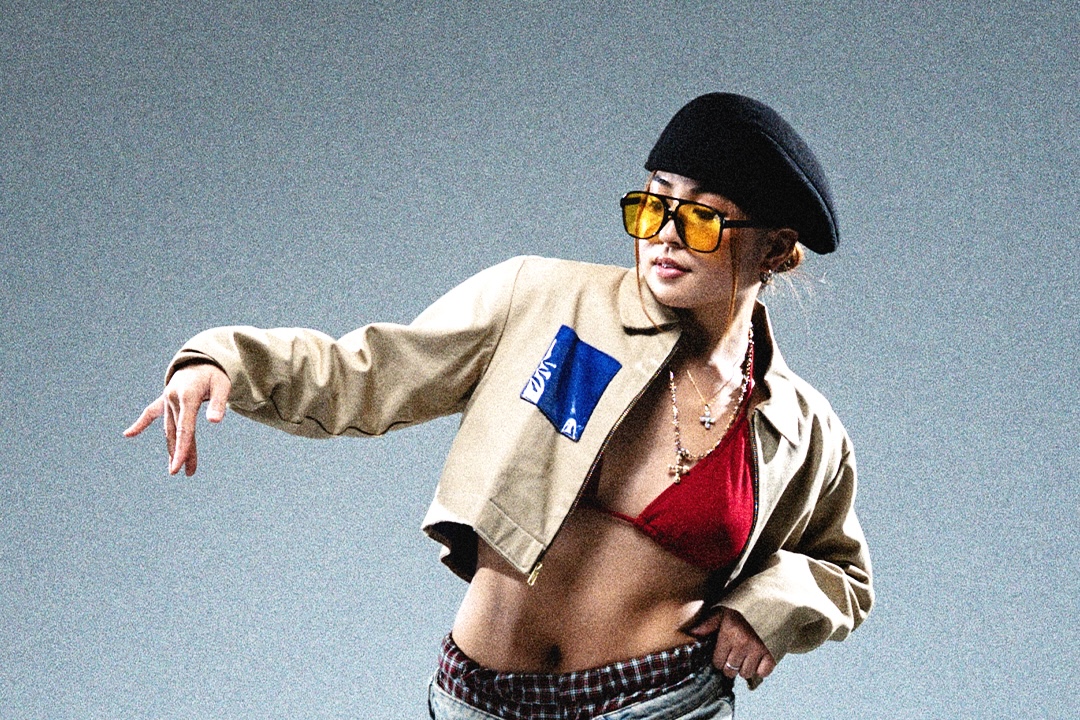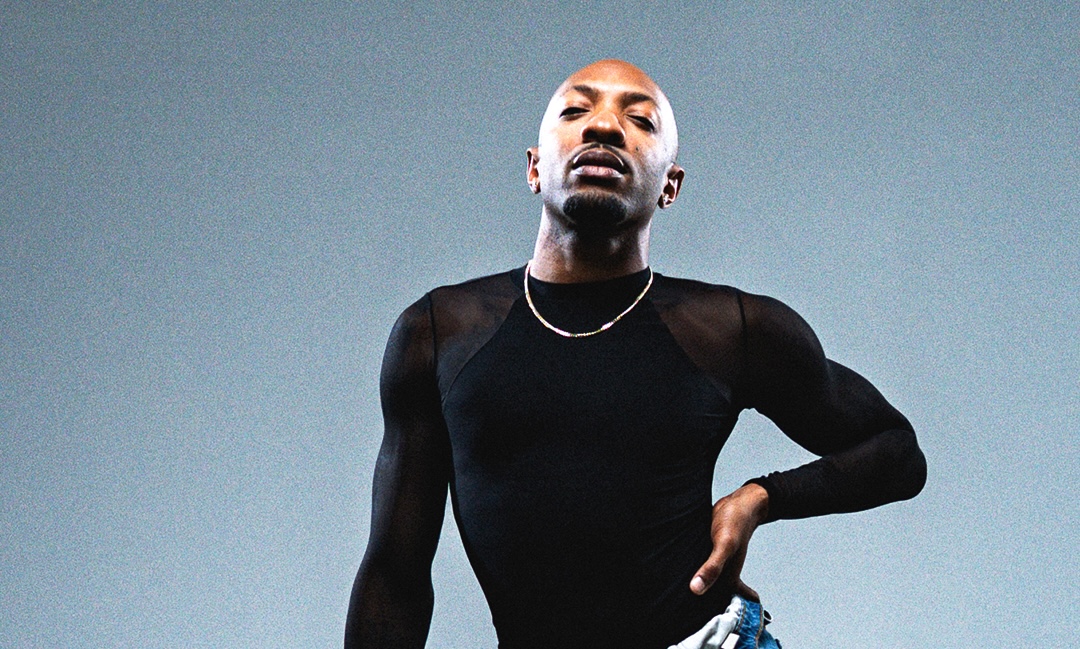We use a lot of dance terms that we can't fully or specifically define, but can understand what they mean.
Learn what those dance terms actually mean and you'll gain a much clearer understanding of dance.
This list below includes commonly used dance terms and their definitions. Look up that one word you’ve always been unsure of, or brush up on all of ‘em!
8-Count
This is how we break down and count music. Most dances choreographed to 8 counts at a time, or two 4-count measures back to back.
We get more in depth on the 8-count here: What Is Dance Musicality?
Ball Change
A 2-step move where you transfer the weight of one foot behind or by the other foot. You're basically just stepping twice.
The kick ball change, as the name suggests, is when you kick or scuff your foot before the ball change.
Bass
The lowest of the standard four voice ranges (bass, tenor, alto, soprano), or, the lowest melodic line in a musical composition, that supports the harmony.
Different instruments can produce a bass sound (drums, guitar..) Dancers often use the onomatopoeia “boom” to describe a bass drum sound.
Cypher
A cypher is where a group of dancers in a circle and take turns dancing in the center. It could also be referred to as a freestyle circle.
The cypher, cipher, or circle, has deep, long-standing cultural roots in hip hop culture, African tradition, and even religious beliefs.
Experience one for yourself: What You Should Know Before Going To A Freestyle Jam
Dynamics
Different types of execution of movement. Dynamics depend on how much and fast your energy is distributed. Contrasts in dynamics make a piece look more "dynamic."
Focus
Where you are looking while you dance. Common ones are: right, left, up, down, and the “45”s AKA the diagonals between those sides.
Freestyle
Improvisational dancing that allows the dancer to express their individual style (i.e. a dance that is not pre-planned)
It’s the process of spontaneously creating movement that was not choreographed ahead of time.
Get way more into freestyle and other dance terms here: How To Freestyle Dance
Fundamentals
Hip Hop Fundamentals refer to the 4 pillars of Hip Hop Culture.
Originating in the 1970s in New York City, they are: Emceeing, DJing, Graffiti, and Breaking.
Fundamental / Foundational Styles refer to the different dance styles developed from Hip Hop and street and funk styles including: Breaking, Popping, Locking, House, Punking / Waacking, Vogueing, and more.
Learn more on Hip Hop History: What Is Hip Hop Dance?
Full Out
Dancing with 100% of your energy and performance.
Wanna go awff? Read this: How To Dance Bigger, Stronger, And More "Full Out"
Groups
This is when the class is divided into smaller sections, and each group will take turns performing the piece as the other students watch. Groups can get intimidating!
But it’s also an integral part to your growth. Push yourself outside of your comfort zone and just go for it!
Hi-Hat
A sound produced by a hi-hat cymbal. Dancers often describe this sound as “tss tss~”
Holds
When you hold a move/pose and not move during a count.
Isolation
When you isolate one part of your body without moving any other parts.

Levels
How high or low your body gets.Low levels require you to bend your knees, or “plie.” High levels may involve getting on your toes in “releve.”
Match levels with the choreographer or other dancers by looking in the mirror to check you are as low/high as everyone else.
Mark
Dancing a piece of choreography with less energy, usually for practicing musicality, timing, and other tools.
This allows you to be more conscious of the music, timing, and where your body placements are rather than releasing your bankai.
The choreographer might use percentages to indicate how much energy you should be putting into your mark.
Example: “Let’s go just 50% for this first run-through!” or “Mark it around 80%”
Milking
When you extend movements throughout a portion of the piece or music.
At the end of a move, instead of “putting a period” on it and ending it definitely by stopping the movement, think of it as a “…” – like you’re dragging out that move.
Musicality
In dance, the matching of movement to the rhythm, sounds, and mood of the music.
“Dance musicality” is demonstrated in several ways, depending on the dancer’s style, the song, and countless other elements.

There are many other dance terms to describe dance musicality.
Practice your musicality by following: How To Train Your Musicality As A Dancer
Lyrics
The words that the singer is singing to, often in sync with the melody.
The lyrics are probably the easiest to distinguish, but hardest to count / dance to, since vocals don’t always match the strict structure of 8-counts.
Sometimes choreographers will make moves that correlate with the lyrics, like miming actions or using certain body parts, AKA wordplay.
Plié
A smooth and continuous bending of the knees outward with the upper body held upright.
Pictures
Think of pictures as literal pictures. If someone were to take a photo of you on the count that you’re hitting a picture, then the clearer that photo turns out to be the “cleaner” you are executing that picture.
Watch this video to hit cleaner pictures!
Rhythm
The repetitive patterns within the music. It’s how we “count” our beats (see “8-count”) and measure our movements.
Select Group
Students chosen by the choreographer to demonstrate the piece to the rest of the class. The criteria for the selected dancers is solely up to the choreographer.
Selected dancers may have been really clean, not so clean but performed the crap out of it, had a lot of personal style, or were just fun to watch. There are so many reasons you can get chosen or not for a select group, so don’t overthink it!
Wanna make it into select group? Use these tips: 9 Ways To Stand Out In Dance Class
Snare
The sharp, staccato drum sound you hear, like the sound you make when you clap your hands. Dancers often describe as snare as “ka!”

Strings
The segment of music created by stringed instruments like guitars, violins, etc. Guitar strums and melodies are also useful to take note of, for more instrumental / acoustic songs.
Switching lines
When a class rotates from the front to back and vice versa to give everyone a chance to be in the front.
When the choreographer says to “switch lines” – if you’re in the front of the room, then move to the back (and vice versa). This is to ensure that everyone gets a fair chance at having a good view of the choreographer throughout the class. It’d be a little selfish to stay in the front the whole time, right?
Practice good dance etiquette: How To Take A Dance Class
Synth
The sound from a sound synthesizer, is produced by electric signals converted to sound through amps and loudspeakers.
Common reference to a “synth” is the synth piano, which may sound like a long slow bass like “wobba wobba”
Tempo
The speed of the music. As you’re learning a piece, the choreographer will teach in slow tempo, then speed it up to medium, and finally “tempo” – AKA the real-time speed of the song.
Textures
We have a whole article for this one. Read: What Are Textures In Dancing?
Transitions
In a performance set, these are the movements that are used to connect 2 different pieces. The music will change, and there will be dancers “transitioning” on and off the stage or switching their position on stage.
Urban Dance / Urban Dance Choreography
OH man. Too much to fit into this list. Here, read this: What Is Urban Dance?
Now that you have a better grasp of common dance terms, you can see them in action!
Take a class on STEEZY Studio for real-life application of these dance terms. Sign up today and try it for free!
Are there more dance terms you want clarified? Comment below and we'll help!










